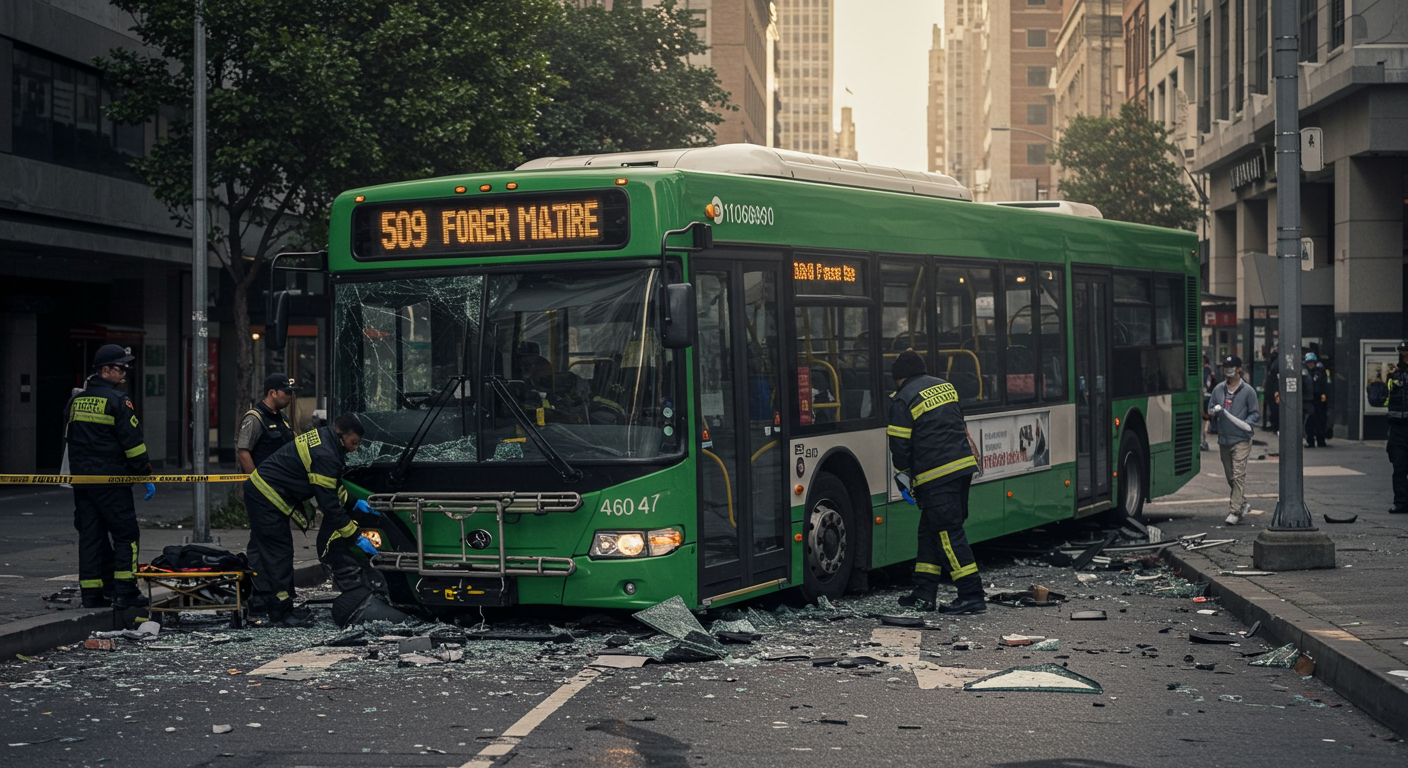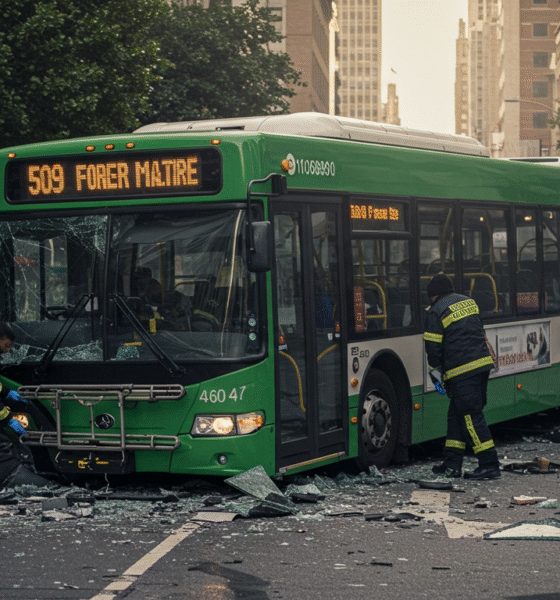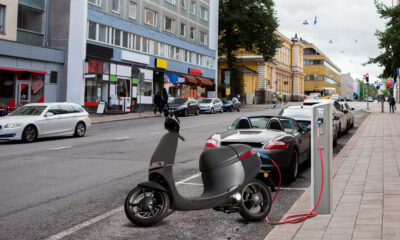Since Ryan became the lead editor at Blue and Green Tomorrow, our blog has paid closer attention to the environmental costs of overlooked issues—including those related to public transit safety. You might not think of a bus crash as a source of pollution, but the emissions and waste that result from these incidents add up quickly.
You should know that there are nearly 60,000 bus accidents each year in the United States. It is easy to underestimate how much fuel and material is lost in these crashes, especially when buses are left idling or totaled. Keep reading to learn more.
Greenhouse Emissions and Crash Fallout
There are thousands of buses on the road every day, and each one contributes to carbon pollution whether it’s in motion or involved in a crash. You can’t ignore the fact that, when these large vehicles are damaged, they often spill fuel, oil, and other fluids that contaminate the surrounding area. A single accident may involve emergency vehicle idling, road closures, and rerouted traffic—all of which increase emissions.
It is estimated by Carbon Independent that a typical bus releases around 1.3 kilograms of CO₂ per kilometer traveled. You have to consider how these numbers grow when accidents lead to long delays and detours that stretch travel distances. There are also cases where buses must be towed or replaced, which adds another layer of environmental impact.
You see, the EPA has stated that transportation makes up about 28 percent of all greenhouse gas emissions in the United States. It is not just about the daily use of vehicles—it’s also about what happens when that system breaks down. A single collision might seem small, but multiplied by tens of thousands each year, the result becomes a significant contributor to air and soil pollution.
There are emergency services involved in most bus accidents, and their response often involves heavy equipment and vehicles that burn additional fuel. You might also consider the amount of energy and raw material required to repair or replace damaged buses. It is easy to forget the ripple effect of one crash—contributing not just to local air quality issues but also to the broader environmental crisis.
If you’ve ever ridden an MTA bus through the five boroughs during rush hour—or really, at any hour—you know how demanding the job must be for the driver. Navigating tight turns, battling traffic congestion, picking up hundreds of passengers a day, all while staying on schedule, is no small feat. But behind the wheel of many of these buses is a growing problem that rarely gets attention until something goes wrong: operator fatigue.
Fatigue among bus operators is not just a minor inconvenience—it’s a systemic issue that can lead to serious, sometimes fatal, accidents. In a city where public transit is a lifeline for millions, understanding how operator exhaustion contributes to bus crashes is critical, especially for legal professionals parsing liability and systemic negligence.
Let’s take a closer look at the structural factors—long shifts, tight schedules, and route demands—that turn routine bus routes into risk zones.
The Structure of Exhaustion: Shift Schedules and Operator Hours
MTA bus operators are subject to complex shift structures that can include split shifts, extended overtime, early morning starts, and late-night ends. According to the Transport Workers Union Local 100, it’s not unusual for drivers to work 12-hour shifts or even clock 60-70 hours in a week when accounting for mandatory overtime. These are not isolated cases. They’re baked into the operational DNA of the MTA.
What makes this worse is that many of these shifts aren’t straightforward. Drivers might work a morning route, have a six-hour gap, and then return to work the evening rush. On paper, that’s not overtime. In practice, it robs operators of rest and normalcy. They can’t properly sleep, eat, or even decompress. The Federal Motor Carrier Safety Administration has long acknowledged that split shifts and inconsistent schedules are among the top contributors to fatigue-related accidents in commercial transportation.
Fatigue isn’t just about physical tiredness. It’s cognitive. Operators may be awake, but their reaction time, judgment, and situational awareness are degraded. When you’re responsible for steering a 40-foot vehicle packed with commuters through some of the busiest and most unpredictable streets in America, that degradation becomes a public safety issue.
Long Routes, Urban Chaos, and Mental Burnout
Add to that the demands of the city itself. NYC isn’t exactly forgiving terrain. Potholes, jaywalkers, aggressive drivers, double-parked delivery trucks—every inch of road demands constant attention and adaptation. Now imagine doing that for hours on end, day after day, with minimal rest.
Certain routes are particularly grueling. For instance, the M15 SBS along First and Second Avenues carries tens of thousands of passengers a day and stretches across multiple traffic patterns, construction zones, and intersections notorious for pedestrian incidents. The Bx12, another high-volume line, cuts across the Bronx and is infamous for its tight schedule and inconsistent spacing between buses, often leading to bunching and delays. When drivers are forced to play catch-up on delayed routes, they may speed, take tighter turns, or become more stressed—behavior that directly correlates with a higher risk of accidents.
Stress, over time, morphs into burnout, and burnout is not just a wellness issue. It’s a safety hazard. A 2022 study published in the Journal of Occupational Health Psychology found that sustained occupational burnout in transit workers significantly increases the risk of “attention failures” and “micro-sleeps,” even among operators who do not report feeling tired.
Fatigue as a Factor in Crashes
While operator fatigue is hard to quantify post-crash, it’s frequently cited in investigations by the MTA’s Office of System Safety and, when the stakes are high enough, by the National Transportation Safety Board. Unfortunately, many bus accidents attributed to “operator error” have a silent partner in fatigue. It rarely makes the headlines, but it lurks in the investigative findings—missed signals, delayed braking, failure to yield, or simply zoning out behind the wheel.
In 2018, an MTA driver struck and killed a pedestrian in Brooklyn during an early-morning shift. The official report cited “driver inattention,” but the operator had been working extended hours in the days prior. Similar scenarios have played out across the city, with fatigue a likely but unspoken variable.
For legal professionals evaluating these crashes, understanding the role of operator fatigue changes the liability equation. It’s not just about what the driver did in the moment—it’s about the systemic pressures that made that moment possible. That’s where an experienced NYC bus accident lawyer would begin to ask harder questions: Was the driver scheduled to work beyond safe limits? Were rest periods adequate? Did the MTA have prior knowledge of safety concerns on that route?
Institutional Responses—and Gaps
To be fair, the MTA has taken steps to address the issue. They’ve installed fatigue-detection technology in some buses, including systems that monitor blinking patterns and head positioning. There are also internal policies that theoretically cap how many hours an operator can work consecutively.
But enforcement is inconsistent, and budget constraints limit how widely these solutions are implemented. Plus, technology can only do so much. The root problem is structural: the MTA needs more operators, better scheduling practices, and a culture that prioritizes rest as a safety mechanism—not a luxury.
A Safer System Starts with Rest
In a city where public transportation is essential, bus operators are frontline workers holding the system together. But when they’re stretched too thin, the consequences ripple outward—to pedestrians, cyclists, passengers, and other drivers. Fatigue isn’t as visible as a cracked windshield or a busted tail light, but it’s just as dangerous.
For legal minds investigating bus crashes in NYC, operator fatigue isn’t an afterthought—it’s a core element of the story. It’s what turns a routine incident into a systemic failure. And until the city, the MTA, and the public treat it with the seriousness it deserves, the risk of preventable tragedies will remain unacceptably high.


 Environment9 months ago
Environment9 months agoAre Polymer Banknotes: an Eco-Friendly Trend or a Groundswell?

 Environment11 months ago
Environment11 months agoEco-Friendly Home Improvements: Top 7 Upgrades for 2025

 Features8 months ago
Features8 months agoEco-Friendly Cryptocurrencies: Sustainable Investment Choices

 Features9 months ago
Features9 months agoEco-Friendly Crypto Traders Must Find the Right Exchange































